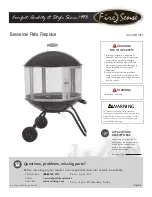
Danfoss District Energy
DSA 1 MINI -
14 DEN-SMT/PL
VM.HE.B2.02
Danfoss District Energy
11.0 Troubleshooting
If operating disturbances occur, the following basic features
should be checked before carrying out actual troubleshooting:
- the substation is connected to electricity,
- the strainer on the district heating supply is clean,
- the district heating flow temperature is at normal level
(summer at least 60 °C, winter at least 70 °C),
- the differential pressure is higher than or equal to the normal
(local) differential pressure in the district heating network. -
If in doubt, ask the district heating plant,
- there is pressure on the system.
11.1 Troubleshooting - Heating
Troubleshooting
Problem
Possible cause
Solution
No heat
Strainer clogged on DH og HE side
(radiator circuit).
Clean strainer.
Filter in district heating meter clogged.
Clean the filter (after consulting the
district heating plant).
Defective differential pressure controller.
Check the functions of the differential
pressure controller - clean valve seat if
required.
Defective sensor
Replace sensor
Defective actuator.
Check the functioning of the actuator.
Defective motor valve - or possibly dirt
in the valve housing.
Check the functions of the motor valve -
clean valve housing if required.
Automatic controls wrongly set or
defective - possibly power failure.
Check if the setting of the controller is
correct - see separate instructions.
Check the power supply.
Temporary setting of actuator to “manual”
control - see instruction on heating
circuit, manual control.
Pump out of operation.
Check that the pump is receiving power
and that it runs. Control that there is
no air in the pump housing - see pump
manual.
The pump is set at too low speed of
rotation.
Set the pump at higher speed of rotation
- see instructions on heating circuit.
Air pockets in the system.
Vent the installation thoroughly.
Uneven heat distribution
Air pockets in the system.
Vent the installation thoroughly.
Supply temperature too high
Wrong setting of automatic controls.
Adjust automatic controls, see instructions
for automatic controls.
Defective sensor.
Replace sensor.
Defective controller. The controller does
not react as it is should in accordance
with the instructions.
Call in automatic controls manufacturer
or replace controller.




































